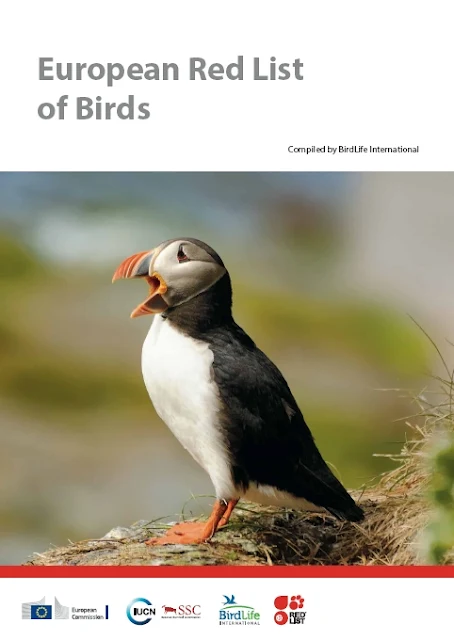EXECUTIVE SUMMARY
Aim
The European Red List is a review of the conservation status of all European species (mammals, birds, reptiles, amphibians, freshwater fishes, butterflies, dragonflies, bees, medicinal plants and selected groups of beetles, molluscs, and vascular plants) according to IUCN regional Red Listing guidelines. It identifies those species that are threatened with extinction at the regional level – in order that appropriate conservation action can be taken to improve their status. This Red List publication summarises the results for European birds.
Scope
The geographical scope is continent-wide, extending from Greenland in the northwest to the Urals in the northeast, and from the Canary Islands in the southwest to Cyprus and the Caucasus in the southeast. Red List assessments were carried out at two regional levels: for geographical Europe as described above, and for the 272 countries that were Member States of the European Union during the period covered by the 2008-2012 round of reporting under Article 12 of the Birds Directive.
Status assessment
The status of all species was assessed using the IUCN Red List Categories and Criteria (Version 3.1; IUCN 2012a3), which are the world’s most widely accepted system for measuring extinction risk. All assessments followed the latest Guidelines for Using the IUCN Red List Categories and Criteria (IUCN 20144) and the latest Guidelines for Application of IUCN Red List Criteria at Regional and National Levels (Version 4.0; IUCN 2012b5). Assessments are available on the European Red List website and data portal: http://ec.europa.eu/environment/nature/conservation/species/redlist, http://www.iucnredlist.org/europe and www.birdlife.org/datazone.
Results
At the European regional level, 13% of bird species are threatened, with 2% Critically Endangered, 3% Endangered, and 7% Vulnerable. A further 6% are Near Threatened. Within the EU 27, 18% of bird species are threatened, with 2% Critically Endangered, 4% Endangered, and 12% Vulnerable, and a further 6% are Near Threatened. The countries with the largest numbers of bird species are Russia and Turkey. Russia and Eastern Europe, and the Mediterranean, Black Sea and Caucasus regions show a higher species richness than northwest Europe. Russia and Turkey have the highest richness of threatened species. Important numbers of threatened species can also be found in the Caucasus region, the Iberian Peninsula and France, as well as in some regions in the Baltic States and Eastern Europe. Threatened species, mainly marine birds, are found in north and northwest Europe. There are 91 bird species endemic or near-endemic to Europe, found mainly in temperate and central Europe. The Mediterranean and Macaronesian islands have many endemic bird species, as does the Caucasus region. ‘Biological resource use’, and ‘agriculture and aquaculture’ are Europe’s top threats to bird species, followed by ‘climate change and severe weather’, ‘pollution’, ‘invasive and other problematic species, genes and diseases’ and ‘natural system modifications’.
Conclusions
Across Europe, many governments, NGOs and other parties are showing increasing commitment to conserving wild birds and their habitats and thanks to these efforts some species are showing signs of recovery. However, the proportion of threatened species in this assessment is comparable to that in the previous assessment a decade ago. Bird species continue to decline as a result of various threats, including illegal hunting, changing agricultural practices, invasive and alien species and habitat loss and degradation. It is evident that much more needs to be done to save threatened European bird species from extinction and to safeguard the bird populations of Europe.
- BirdLife International. 2015. European Red List of Birds. Luxembourg. Office for Official Publications of the European Communities. [PDF]

No hay comentarios:
Publicar un comentario
Bitacora Naturae no se responsabiliza de las opiniones vertidas por los comentaristas del blog. Este es un lugar plural donde serán publicadas todas aquellas opiniones constructivas, que mantengan unos mínimos de respeto y se ajusten a la temática de los post. Cualquier comentario ofensivo, publicitario o fuera de lugar será eliminado directamente.